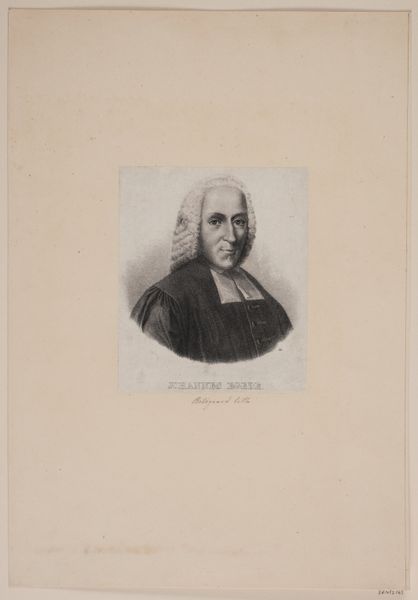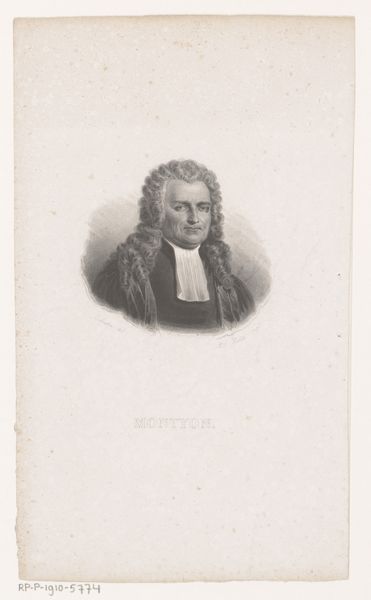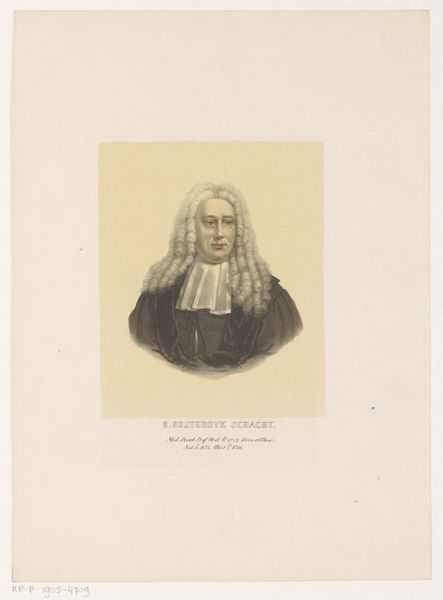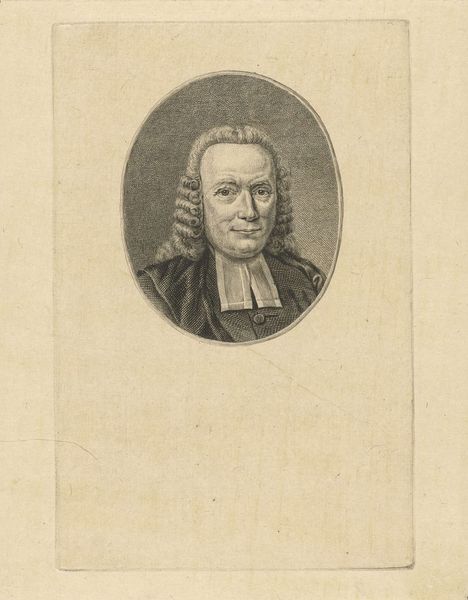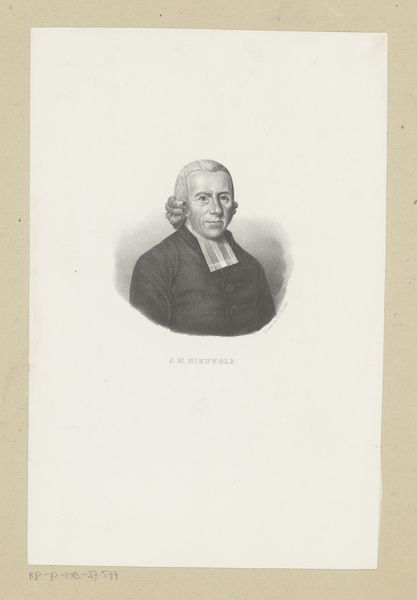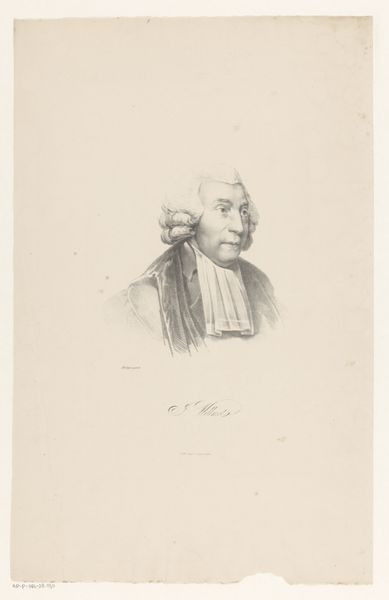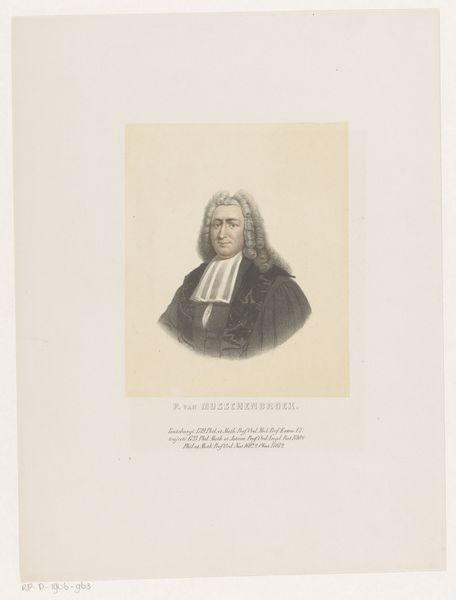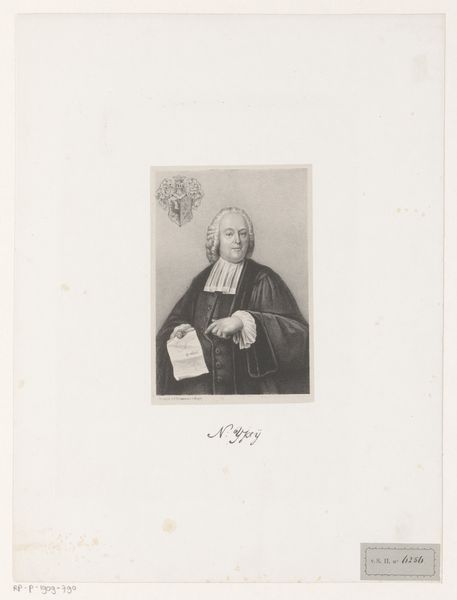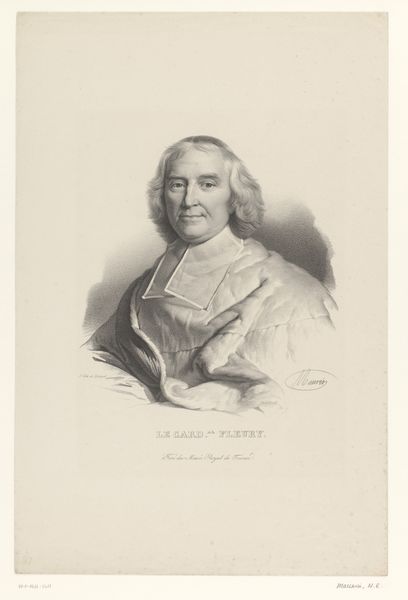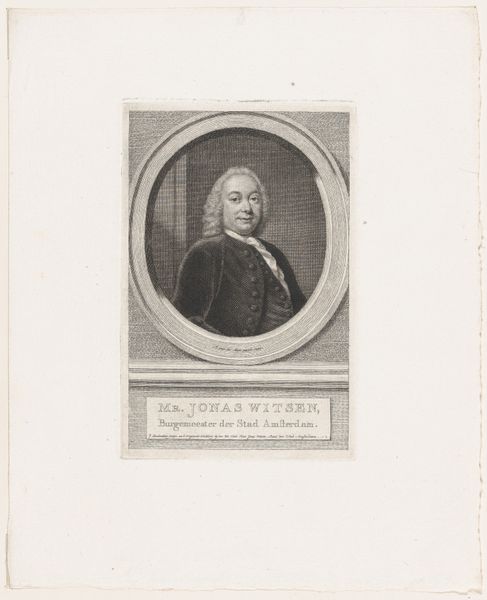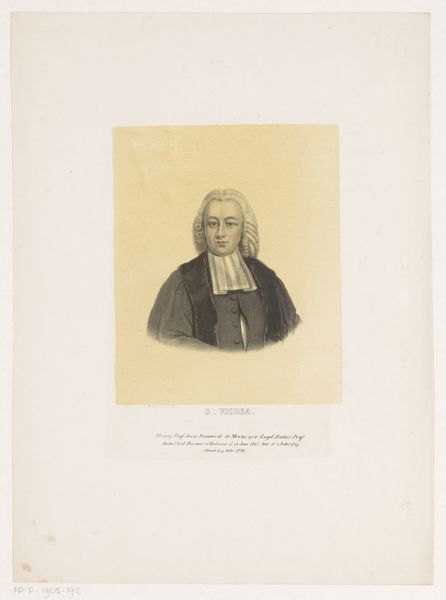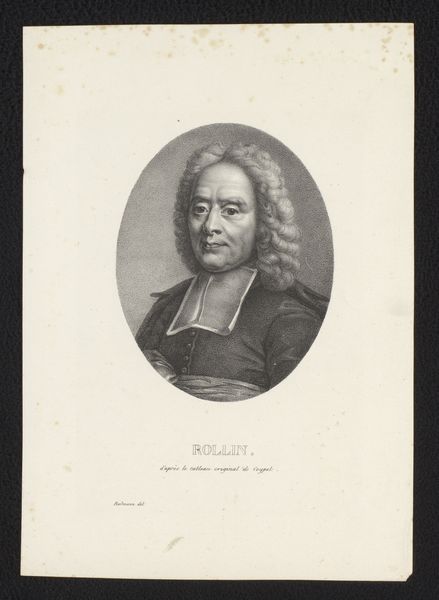
drawing, pencil
#
portrait
#
pencil drawn
#
drawing
#
pencil sketch
#
caricature
#
pencil drawing
#
romanticism
#
pencil
#
portrait drawing
#
pencil work
#
academic-art
#
realism
Dimensions: height 220 mm, width 155 mm
Copyright: Rijks Museum: Open Domain
Curator: Here we have "Portret van Johannes Oosterdijk Schacht," a pencil drawing created circa 1837-1840 by N.M. Schild, currently held in the Rijksmuseum collection. What are your initial impressions? Editor: There's a quietness to this piece; a formality suggested through the posture and dress, but softened by the medium. Pencil lends itself to intimacy. It's also interesting how the subject, who I assume was affluent, is portrayed without grandiosity or pomp. Curator: Indeed. The delicate rendering and controlled gradations of tone reveal a subtle hand at work. Consider the artist's careful modulation of light and shadow across the face, achieving both realism and an elegant stylization of form, typical of Romanticism's attention to idealized representation and structure. Editor: But doesn't the context of portraiture complicate this reading? Who was Johannes Oosterdijk Schacht? How did he benefit from the social order that allowed him to be immortalized in art, while others were marginalized? His neckwear signals privilege, an interesting reflection on how attire demarcates belonging, even today. Curator: The composition itself guides us toward this sense of presence through controlled pictorial space. Observe how the artist uses subtle gradations of shading to imply three-dimensionality, and to generate the structure around his features. Editor: And how does this representation reinforce existing social hierarchies? Or, perhaps, was this commission meant to soften his public image, presenting him as approachable? We must consider how portraiture historically functions as a tool for crafting and disseminating power narratives. Curator: Certainly, this perspective offers insight into social constructs present. Nevertheless, focusing on pure formalism is of significant merit as we look at shape and structure within the art piece, where Romanticism employs visual vocabulary to structure narrative. Editor: It is impossible to extricate portraiture from social narrative. Considering social and power structures helps to deepen our understanding of what exactly we're seeing here. It opens avenues of inquiry beyond the aesthetic. Curator: It gives much to contemplate. Analyzing the composition and application of artistry deepens our understanding, especially when reflecting on how technique generates emotional response. Editor: It is fascinating how the artist’s technical choices create particular statements based on power and persona. Together, that offers avenues into the artistic representation.
Comments
No comments
Be the first to comment and join the conversation on the ultimate creative platform.
